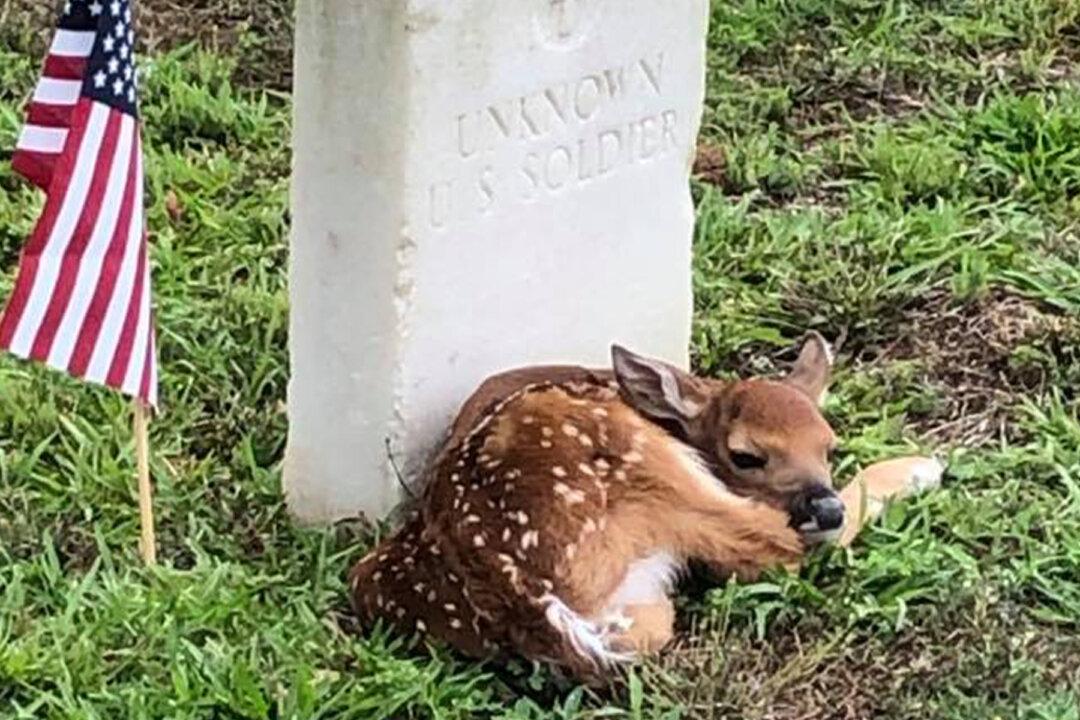This story was last updated in June 2020.
A worker at a national park in Georgia was moved to discover a fawn curled up by the headstone of an unknown soldier in the park’s cemetery. A photo of the baby deer shared on social media had many netizens respond with reverence.





